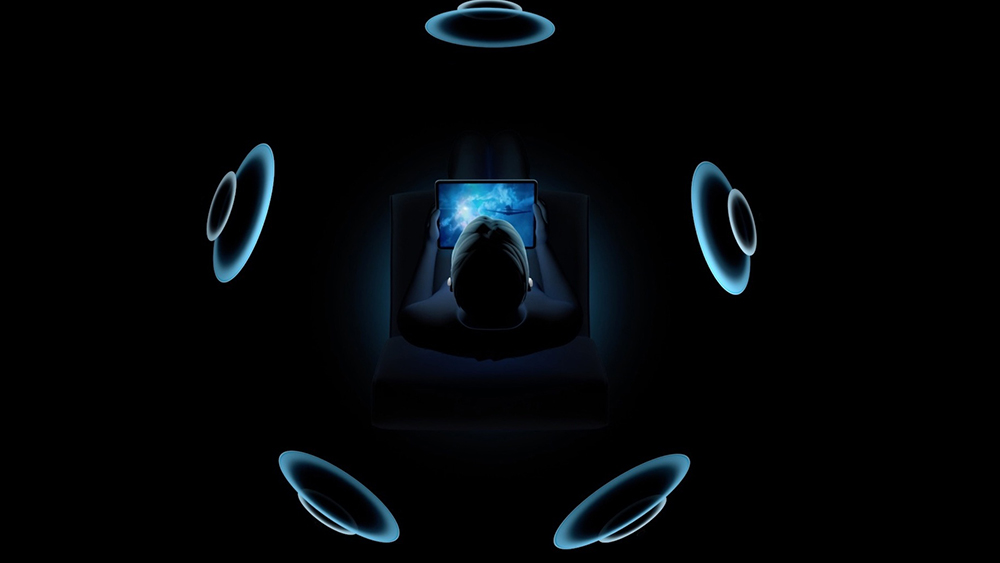
Over the past few years, spatial audio has become a big deal for most major headphone manufacturers, quickly evolving into a staple feature in the arsenal of many premium wireless earbuds and headphones. Apple first announced its move towards employing spatial audio back in June 2020, and around four years later, the 3D audio technology has gained significant traction not only for Apple but for many major manufacturers around the industry.
Essentially Apple’s take on 'Dolby Atmos for Headphones' and Sony’s PS5 3D Audio and 360 Reality Audio, Apple Spatial Audio is designed to deliver surround sound and 3D audio via your headphones, with some specific AirPods and Beats models offering a more extensive experience and enhanced features such as dynamic head tracking.
The feature first arrived for movies and TV shows as part of iOS 14 in September 2020 and was then released on Apple Music on 7th June 2021. Since then, spatial audio has been extended to tvOS for use with the Apple TV 4K, with Macs powered by the company's latest M1 chip and in conjunction with select AirPods headphones and earbuds. As of late 2023, Apple's HomePod 2 and HomePod Mini smart speakers also have spatial audio support, while 2023's AirPods Pro 2 and 2024's AirPods 4 (both versions) also feature the Apple-branded tech.
So how do you get Apple Spatial Audio? How does the implementation differ between movies and music? And how does it compare to Dolby Atmos? Scroll down to discover answers to (almost) every question you ever had about Apple Spatial Audio.
- Keen to try it for yourself? Here are 11 of the best Spatial Audio tracks on Apple Music to get you started
What is Apple Spatial Audio?
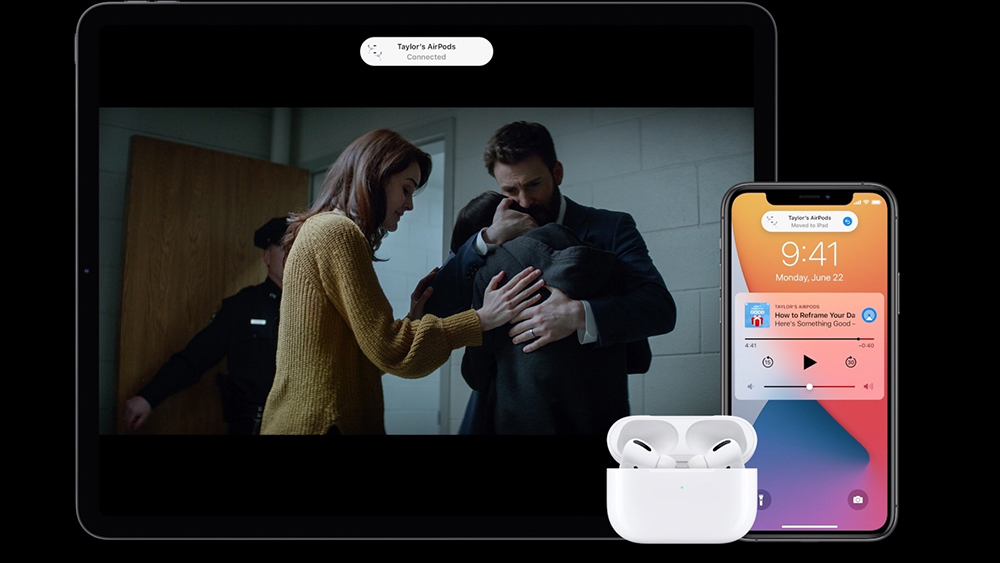
Apple Spatial Audio takes 5.1, 7.1 and Dolby Atmos signals and applies directional audio filters, adjusting the frequencies each ear hears so that sounds can be placed virtually anywhere across a three-dimensional space, meaning that sounds appear to be coming from in front of you, from the sides, the rear and even above. The idea is to recreate the audio experience of a cinema setup whereby speakers and sound literally surround you and immerse you in your music and movies.
This isn't the first technology of its type. Dolby Atmos for Headphones has been around for some time now, while Sony has its own 360 Reality Audio format accessible via platforms such as Tidal and Amazon Music.
Apple’s Spatial Audio also tracks your head movement using sensors (accelerometers and gyroscopes) in the AirPods 3, AirPods Pro, AirPods Pro 2, AirPods Max and some Beats headphones to position the sound accurately. The tech even tracks the position of the iPhone or iPad that you’re listening to music or watching videos on so that sound is also placed relative to the screen. This means that if you turn your head or reposition your device, dialogue (or vocals) will still be anchored to the action on the screen.
Other brands have implemented their own versions of spatial audio – JBL's Tour Pro 2 earbuds have a spatial audio option, while Bose offers its 'Immersive Audio' technology in its Ultra Headphones and Ultra Earbuds, for instance, but these aren't tied to a specific audio format. Many are also pushing their respective takes on head tracking for flagship models, including the Sony WF-1000XM5, the Bose QuietComfort Ultra Earbuds and the Samsung Galaxy Buds 3 Pro.
What devices support Apple Spatial Audio?
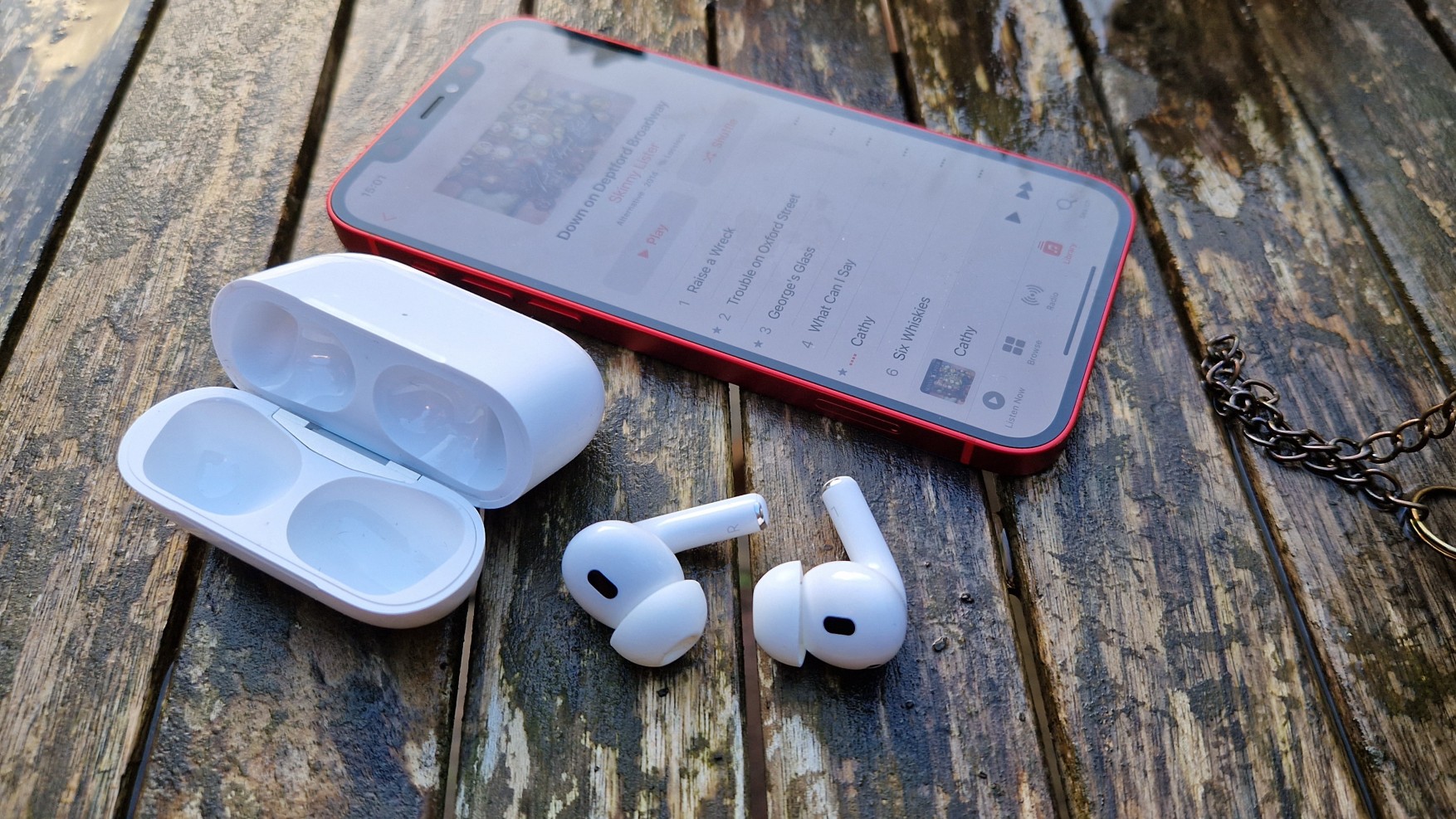
Apple Spatial Audio was initially launched as part of iOS 14 and iPadOS 14, and Apple released the newer Spatial Audio with Dolby Atmos feature for Apple Music on the 7th June 2021 as part of the free iOS and iPadOS 14.6 software updates.
Not all devices with the 14.6 software update can handle spatial audio. Here's the full list of Apple and Beats devices that support spatial audio.
- AirPods Pro (1st and 2nd generation), AirPods Max, AirPods 3, AirPods 4 (standard and with ANC)
- Beats Fit Pro, Beats Studio Pro
- iPhone 7 and later
- iPad Pro 12.9‑inch (3rd generation and later)
- iPad Pro 11‑inch
- iPad Air (3rd generation and later)
- iPad (6th generation and later)
- iPad mini (5th generation and later)
- iOS or iPadOS 15.1 or later
- The built-in speakers on a Mac computer with Apple silicon
- Apple TV 4K with tvOS 15 or later
- Apple HomePod (1st and 2nd generation), HomePod Mini
- Apple Vision Pro
- Audiovisual content from a supported app (e.g. Apple TV+, Disney+, Netflix)
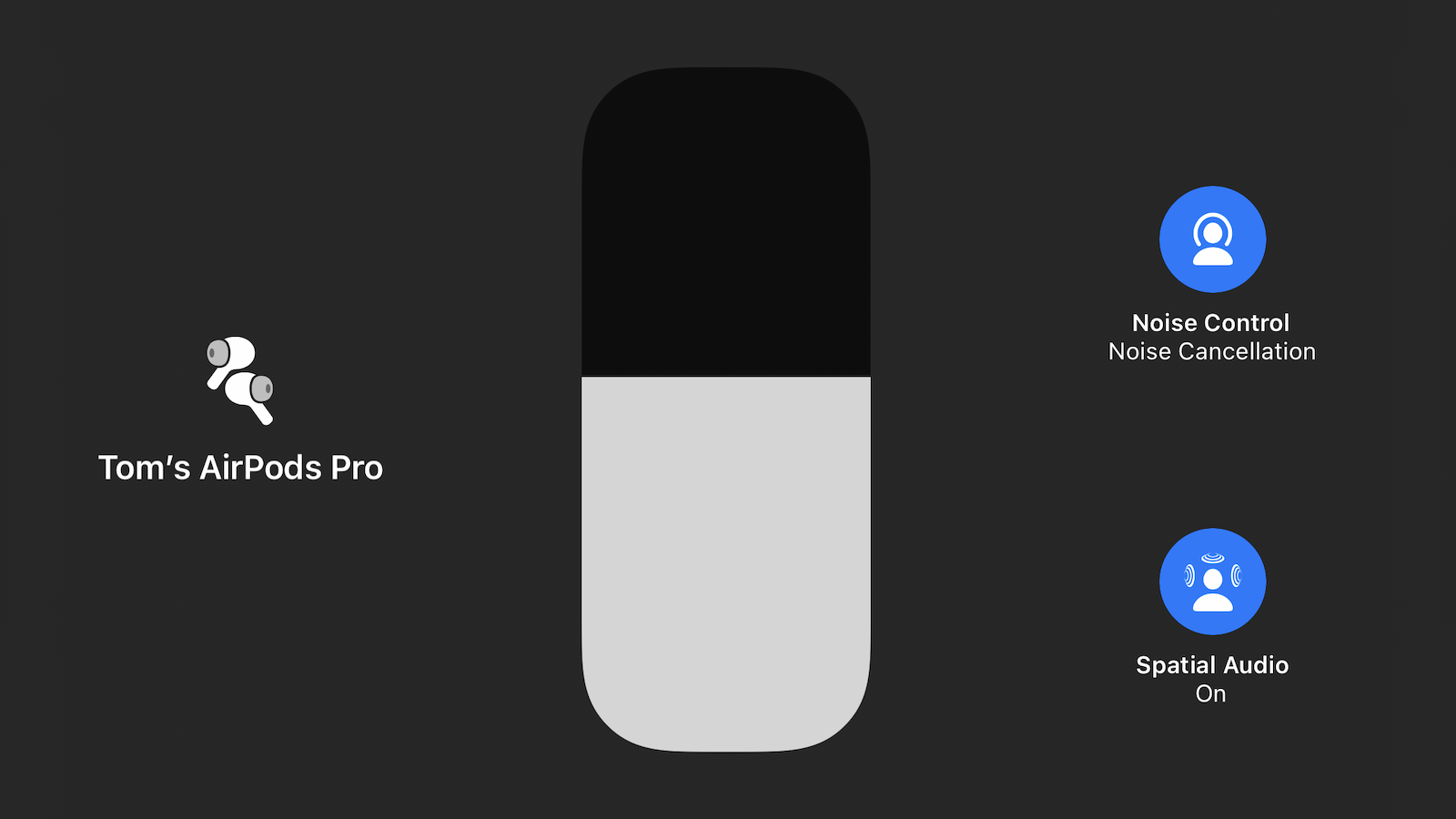
It’s worth noting that Dolby Atmos is only available on Apple devices launched since 2018. While you don’t need Atmos for spatial audio, the two working together will likely produce the best results.
There are newer products from Apple (including the top Beats models with an Apple silicon chip) that support spatial audio, and we imagine that any future headphones (such as the upcoming AirPods Max 2 and AirPods Pro 3) will include spatial audio as standard.
As of March 2023, select Sonos products support Apple Music's spatial audio tracks, such as the Era 300 wireless smart speaker. See the list below for a rundown of all 'foreign' devices supporting Apple Spatial Audio.
- Sonos Era 300
- Sonos Arc
- Sonos Beam Gen 2
On the software side of things, as long as an app supports 5.1, 7.1 and/or Atmos, it will work with spatial audio. That list already includes Amazon Prime Video, Netflix, Disney+, HBO Go, Hulu and Apple TV+. This means that owners of a compatible iPhone/iPad and AirPods can watch TV shows and films with surround sound and the spatial audio effect.
Stereo content on an app can also be converted to spatial audio; all a developer needs to do is allow stereo spatialisation via an Apple plug-in.
How do you turn Apple Spatial Audio on?
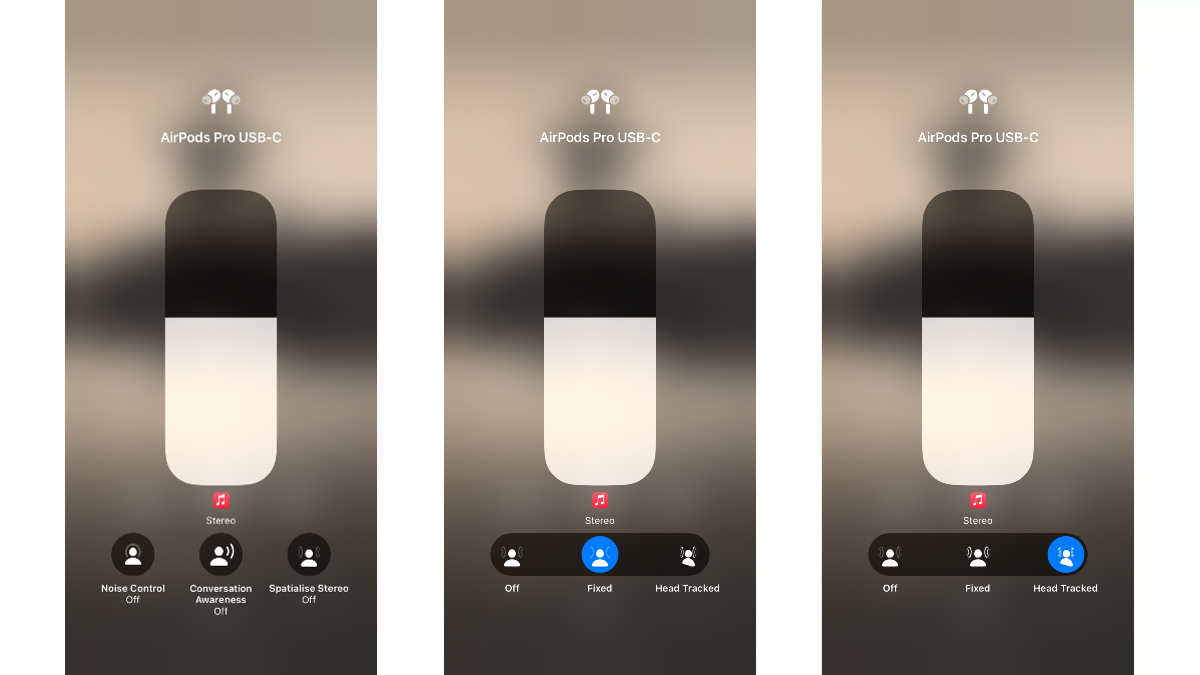
To listen in Apple Spatial Audio using an iPhone or iPad, make sure you're wearing compatible AirPods that are connected to the device, and have an app open (Disney+ or Apple Music, for instance). Open up your device's Command Centre by swiping down from the top-right corner of the screen, then press and hold the headphone volume icon. On the panel that pops open, you will see a spatial audio icon in the bottom row.
Press the spatial audio (or Spatialise Stereo when playing Apple Music) icon to choose between three further options: Off, Fixed and Head Tracked. Choose Head Tracked if you want to deploy spatial audio and dynamic head tracking, while Fixed refers to spatial audio only. If you want to stick with good old stereo, simply tap Off.
On Apple TV, follow the same process of connecting your AirPods to the Apple TV, then head into Settings > Remotes and Devices > Bluetooth, select your AirPods, and then choose either spatial audio while you’re playing multi-channel video content (e.g. on Disney+), or Spatialise Stereo while you’re playing two-channel stereo content.
Additionally, if you want to listen to spatial audio with Dolby Atmos songs on Apple Music, you have to turn the option on in the app first. On your iPhone, head to Settings > Music and then scroll down to the Audio section. You'll see a Dolby Atmos setting and can choose between Automatic, Always On and Off. Automatic means that the Dolby Atmos version will play correctly and automatically whenever connected to the compatible AirPods or Beats and with the spatial audio (or Spatialise Stereo) turned on. Crucially, don't use this setting if you're using third-party headphones. If you switch this option to Always On, the non-Apple headphones will play back the Dolby Atmos tracks correctly.
For listening to the Dolby Atmos tracks in Apple Music on a HomePod, Apple TV 4K, MacBook or Android device, simply find the settings for the Apple Music app (or just Music settings) and turn on Automatic or Always On accordingly.
Is Apple Spatial Audio good with movies?
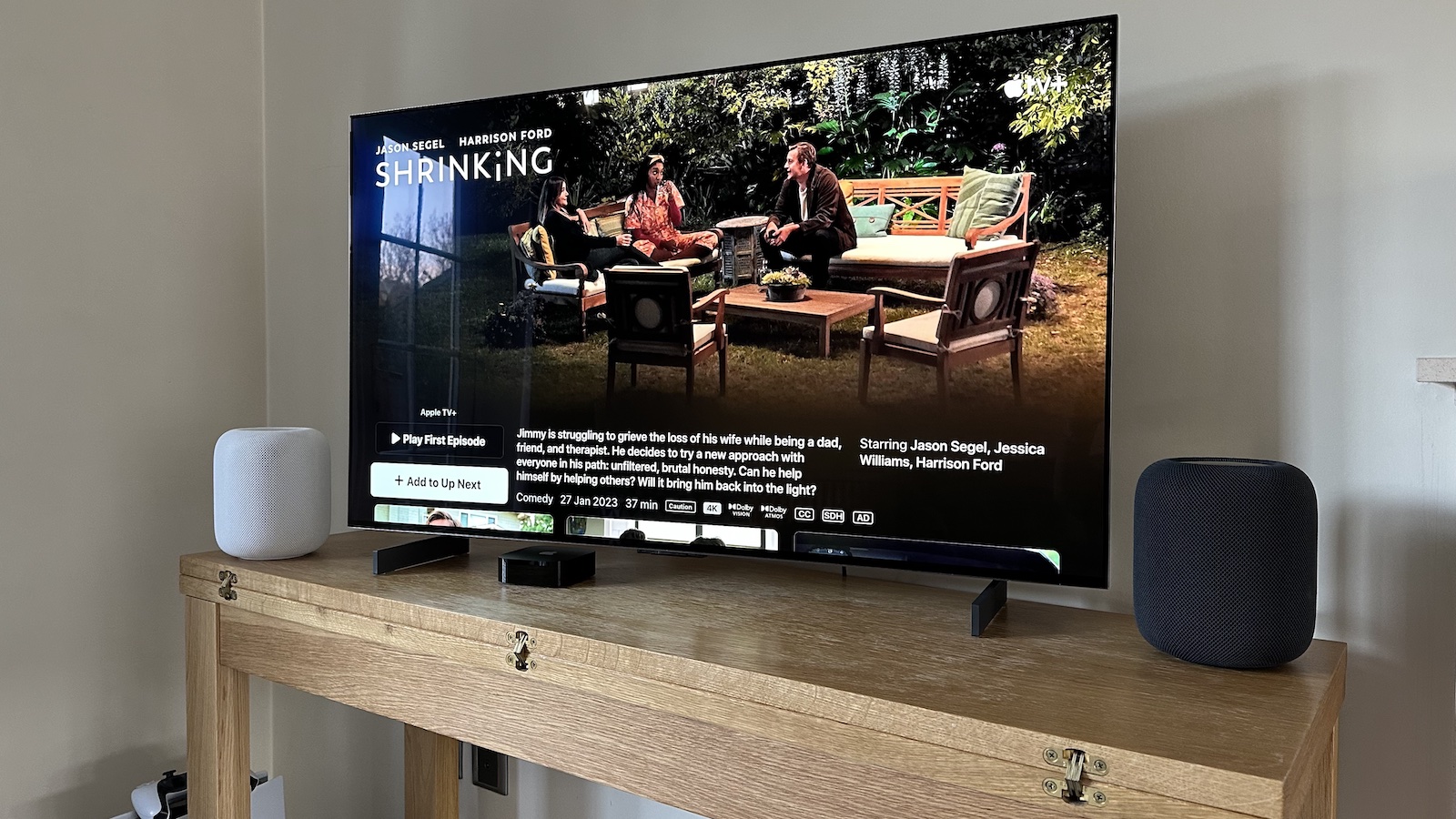
Having given spatial audio an initial whirl with the AirPods Pro and a more thorough go since during our subsequent AirPods Max and AirPods 3 testing, we've certainly impressed with the technology.
The way the audio is tied to the screen is effective, while the extra openness and spaciousness of the sound make for a much more cinematic and engaging experience. There appears to be a slight drop off in terms of directness and punch, but it's not huge and, broadly speaking, Apple Spatial Audio so far appears to be a worthwhile upgrade.
To quote our AirPods Max review, "All told, the effect is superb. The whole presentation is very open, spacious and convincing, and the tracking is amazingly smooth and accurate as you move your head.
"The opening of Gravity is recreated brilliantly by the AirPods Max. The placement of the various voices coming through the radio is brilliantly precise and convincing, there’s excellent weight to the dull thumps against the satellite and the heavy bass notes of the soundtrack, superb all-around clarity, and excellent dynamics as the peaceful scene turns threatening and then catastrophic. It’s easy to forget that you’re listening using headphones, such is the spaciousness of the delivery. It’s terrifically cinematic.
"Simply put, combining an iPad with a pair of AirPods Max headphones gets you the most convincing portable cinema experience that we can think of."
Even with the more modest AirPods 3, we found the feature worthwhile when watching TV shows and movies. "In reality, there will probably be few occasions where you have to move your head or screen much while watching a movie or TV show, but when you do, the technology is true to its word, keeping voices and action tied to the screen regardless of movement. We watch See on Apple TV+ on an iPhone 13 while cooking, and as we move our head to the right the soundscape tilts towards the left earbud – subtly but effectively," we said in our review.
- Get knee-deep in Apple: Apple One subscription bundles Apple TV+, Apple Music and more
How do 'Spatial Audio with Dolby Atmos' tracks sound on Apple Music?
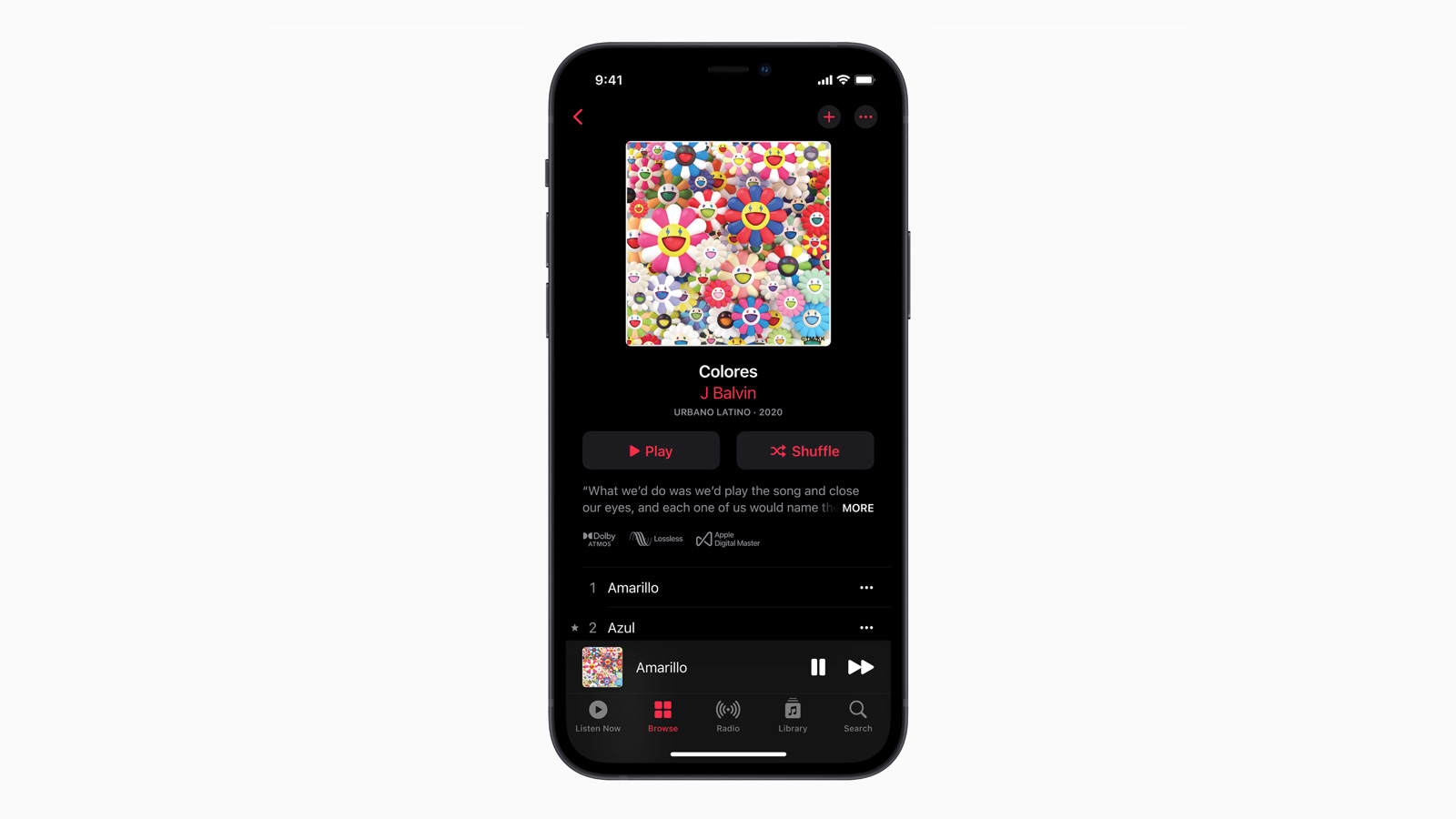
There are thousands of Dolby Atmos-powered spatial audio tracks available in Apple Music's catalogue. Curated Dolby Atmos playlists have been created by Apple, too. Apple Music Classical features songs in spatial audio as well.
As with movies and TV shows, you can listen to Dolby Atmos music in spatial audio with dynamic head tracking with the supporting AirPods and Beats models with a compatible iPhone or iPad. However, because the implementation of spatial audio on Apple Music is sound-only, head-tracking doesn't have to be involved – and that opens it up to more devices. Basically, you don't need a pair of Apple or Beats headphones to listen to Dolby Atmos tracks from an iPhone or iPad – any headphones will work, as long as you enable the correct option in the Apple Music settings as stated above. Crucially, if you do want dynamic head tracking or personalised spatial elements, you will need the specific Apple AirPods or Beats headphones listed above that support these features.
You can also listen to spatial audio with Dolby Atmos tracks through the built-in speakers of your iPhone or iPad – but not the older models. As we reported in July 2021, an updated Apple support document confirms that playing spatial audio out loud requires, "the speakers built into an iPhone XS or later (except iPhone SE), 12.9-inch iPad Pro (3rd generation or later), 11-inch iPad Pro or iPad Air (4th generation)".
Whether connected to AirPods or an external Atmos-supported surround sound system, the Apple TV 4K can output spatial audio with Dolby Atmos tracks through its Apple Music app too.
We've spent hours listening to these tracks on Apple Music, and here are some of the best spatial audio tracks we've experienced. In our AirPods 3 earbuds review, we said: "We spend hours delving into Dolby Atmos-powered spatial audio tracks – from Kraftwerk and Lorde to Ludovico Einaudi and the Beatles – and find ourselves preferring stereo presentations for some, spatial audio for others. You lose some of the directness, immediacy and often musicality that the stereo presentation delivers, but in return, especially when tracks are mixed well, you can get a truly unique (and sometimes exceptional) atmospheric boost from the immersive surround-sound mix that’s much more than a gimmick – just as you can with Atmos tracks on Tidal."
We found the same still during the flagship AirPods Pro 2 review: "As before, some tracks fare better than others, and overall we still prefer the stability and tight cohesion of the original stereo mix."
The spatial audio delivery on the latest HomePod fared better. We said in our HomePod 2 review: "A stereo pair of HomePods is particularly beneficial with Dolby Atmos tracks, which sound even more open and three-dimensional, with very impressive spatial placement of voices and instruments."
What about Apple Music Spatial Audio support on Sonos products?
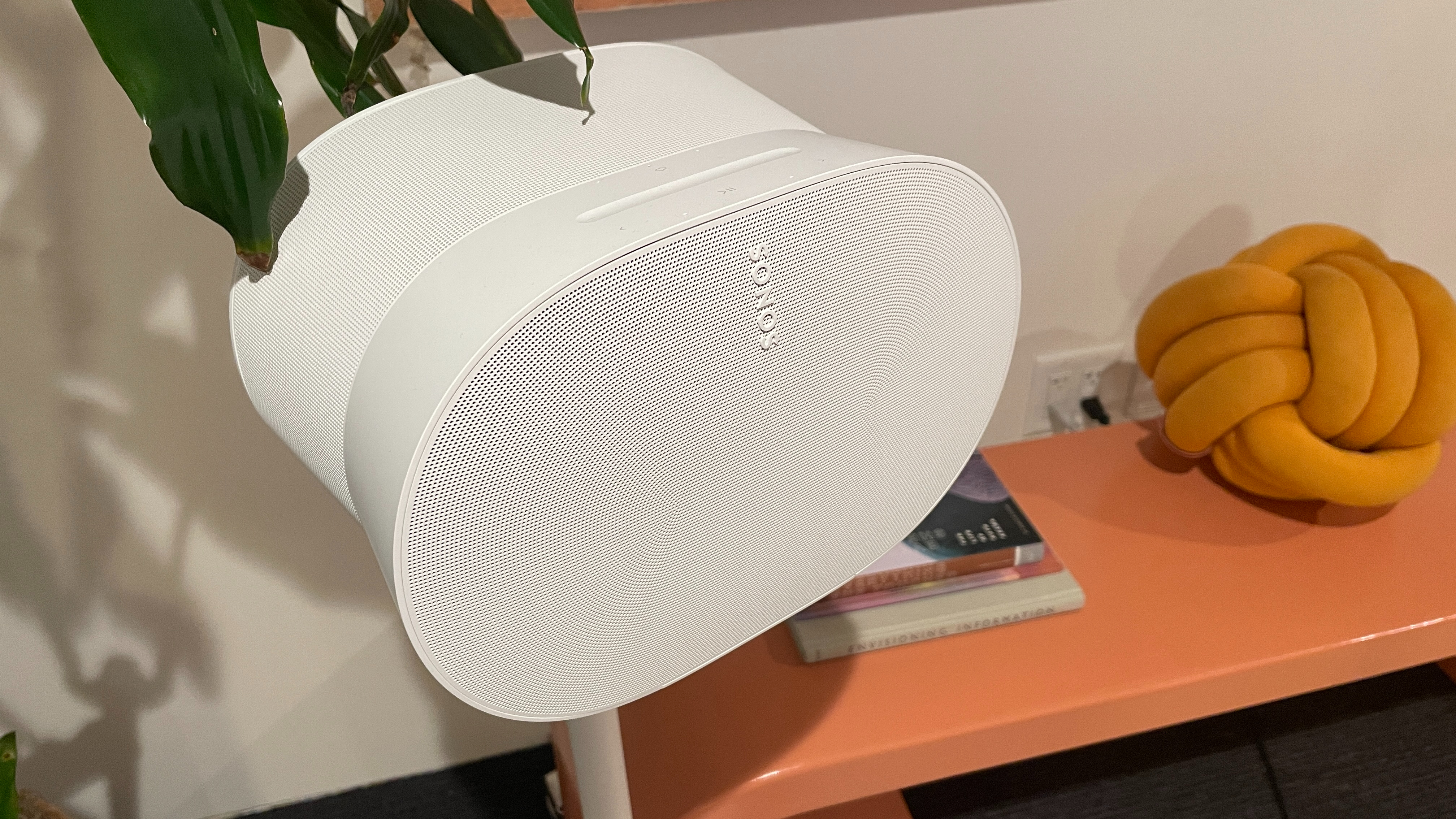
When Sonos introduced its 'spatial audio speaker', the Era 300, last year, the inevitable question was raised: will Apple Music's Spatial Audio tracks be available to play on another brand's product?
The answer was yes. The Era 300, plus its Arc and Beam Gen 2 soundbars, became the first products outside Apple's ecosystem to support spatial audio tracks on Apple Music. It was a welcome confirmation: the Arc and Beam Gen 2 already supported Dolby Atmos playback with TVs and movies, and the Era 300 was originally set to launch with only Amazon Music Unlimited's Atmos tracks supported. With Apple Music's large library of spatial audio tracks available, it's great to see both brands delivering more choices to their customers through this agreement.
The Era 300 was designed specifically for spatial audio playback and is a direct (albeit more expensive) rival to Apple's own HomePod 2. Sonos's efforts are certainly impressive, with the Era 300 delivering the most convincing spatial audio music experience we've heard yet. It's more immersive than the HomePod 2, which sounds comparatively small-scaled when playing the same spatial audio tracks.
We said in our Era 300 review: "The ‘spatial audio’ effect, for the most part, doesn’t feel separate from the original musical intent; it simply sounds more immersive – something we’ve not encountered before with so much enthusiasm. How well the effect is communicated does vary depending on the song and how it’s been mixed for spatial audio, however."
Indeed, how the songs have been mixed in spatial audio has a big impact on how effective the effect is, whether you're listening on headphones or through speakers. There are spatial audio tracks where the spatial audio effect is beneficially immersive and entertaining, but there are also songs that feel far too removed from their original stereo mix.
As Apple's Spatial Audio becomes increasingly ubiquitous (and is inspiring many other brands to adopt this immersive format in different ways), we can see it becoming a typical fixture in future products from now on. Apple's recent AirPods 4 with ANC, for instance, offer spatial audio support. Considering they're around £179 / $179 / AU$299, the threshold for including the technology appears to be lowering a little.
MORE:
Read our Apple AirPods 4 with ANC review
Read the five-star Apple AirPods Pro 2 review
These are the best wireless earbuds and best wireless headphones money can buy







